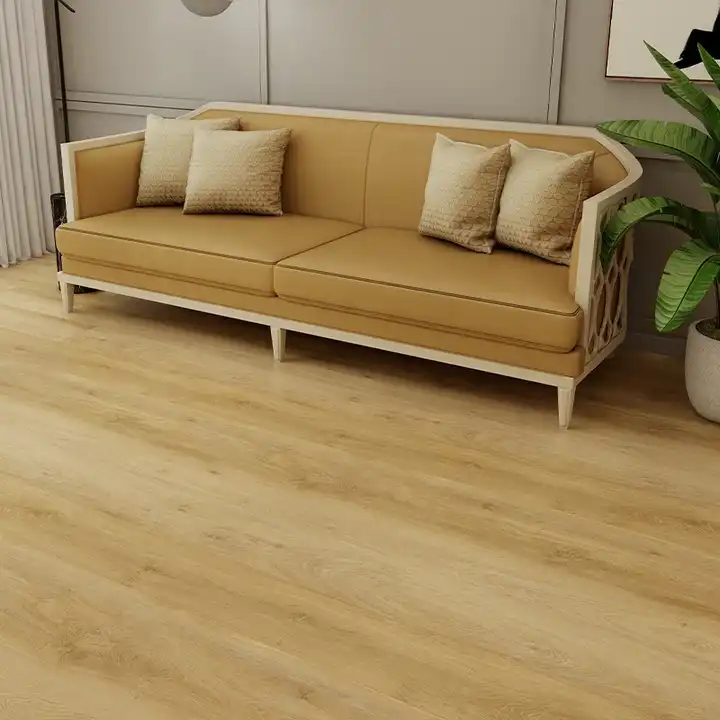Birch Plywood vs. Baltic Birch Plywood: Unveiling the Real Differences for Your Project
Choosing the right plywood for your woodworking or construction project can feel like navigating a forest of options. Two popular choices often stand out: birch plywood and Baltic birch plywood. But what exactly sets them apart? This article is your friendly guide to understanding the differences between birch plywood and Baltic birch, helping you make the best decision for your needs. We'll break down everything from veneer layers to durability, so you can confidently select the perfect ply for your next creation. Get ready to become a birch plywood expert!
What is Birch Plywood and Why is it Popular?
Birch plywood is a type of plywood that, as you might guess, is primarily made from birch trees. Think of plywood as a super strong sandwich made from thin layers of birch veneer glued together. These thin sheets of birch wood, called veneer, are stacked on top of each other with the grain direction alternating for each layer. This clever birch plywood construction gives birch plywood incredible strength and stability, making it much stronger than a single piece of wood of the same thickness. Because birch plywood is strong, it’s a fantastic material for all sorts of projects.
Why is birch plywood so popular? Well, for starters, birch plywood is known for its beautiful, light color and smooth surface. This makes it visually appealing for finished product applications where you want a clean and modern look. Plus, birch plywood is also quite durable, meaning it can handle everyday wear and tear. It's a hardwood plywood, which means it comes from hardwood trees, known for their density and durability. This inherent durability makes birch plywood a reliable choice for various projects around the home and in woodworking.
Baltic Birch Plywood: The Premium Choice Explained
Now, let's talk about Baltic birch plywood. Often considered the "king" of birch plywood, Baltic birch plywood isn't just any type of birch plywood. It's a high-quality plywood specifically manufactured in the Baltic Sea region of northeastern Europe, primarily Russia. Sometimes you might even hear it called russian birch plywood. What makes it so special? The secret lies in its construction. Baltic birch plywood is manufactured with significantly more layers of birch veneer compared to regular plywood or even standard birch plywood.
Imagine those thin sheets of birch wood again, but this time, picture them stacked even closer together, creating a denser, more solid core. This higher veneer count is what gives baltic birch plywood its exceptional strength and durability. Furthermore, baltic birch plywood is prized for its void-free core. Voids are those little gaps or empty spaces you sometimes find inside plywood. Baltic birch plywood is manufactured to minimize these voids, resulting in a consistently solid and stable plywood panel. This plywood is an excellent choice when you need top-notch performance and a flawless finished product.
What are the Key Differences Between Birch and Baltic Birch Plywood?
While both birch plywood and baltic birch are made from birch trees, the differences between birch plywood and baltic birch are significant and impact their performance and applications. The main differences between birch plywood types boil down to a few key factors:
-
Core Construction & Veneer Count: This is the biggest differentiator. Baltic birch plywood boasts a multi-ply core made from numerous layers of birch veneer. Standard birch plywood typically has fewer layers of veneer and may use a combination of hardwood and softwood veneer in its core. This difference in veneer count directly affects strength and stability. Baltic birch plywood is significantly stronger and more rigid due to its denser core.
-
Voids: Baltic birch plywood is specifically manufactured to be void-free, or nearly so. This means the core is solid and consistent throughout. Standard birch plywood may contain voids in its core, which can compromise its strength and durability, especially along the edges.
-
Thickness Consistency: Baltic birch plywood is known for its very consistent thickness throughout the sheet. This is crucial for precise woodworking and joinery. Standard birch plywood may have slight variations in thickness.
-
Price: Due to its superior construction and void-free nature, baltic birch plywood is generally more expensive than standard birch plywood. This price difference reflects the higher quality and performance of baltic birch plywood.
| Feature | Birch Plywood | Baltic Birch Plywood |
|---|---|---|
| Core Construction | Fewer veneers, potentially mixed wood | Many birch veneers, multi-ply core |
| Voids | May contain voids | Virtually void-free |
| Thickness | Slight variations possible | Highly consistent |
| Price | Generally less expensive | Generally more expensive |
| Strength & Stability | Good | Excellent |
Veneer Count and Construction: How They Impact Plywood Quality
The number of layers of veneer and how they are arranged in plywood construction are crucial determinants of plywood quality. Think of it like building with bricks. More bricks, carefully layered, create a stronger wall. Similarly, more layers of veneer in plywood result in a stronger, more stable, and durability enhanced sheet. Baltic birch plywood, with its high veneer count, exemplifies this principle.
Because baltic birch plywood uses only thin sheets of birch wood for every ply, and packs so many plys into each sheet, it gains several advantages. The increased number of layers of veneer means the stresses are distributed more evenly throughout the panel. This makes baltic birch plywood incredibly resistant to bending, warping, and splitting. The cross-laminated structure, where the grain direction alternates with each veneer layer, further enhances stability and strength, preventing warping over time. In contrast, regular plywood or standard birch plywood with fewer layers of veneer and potentially less consistent core materials may not offer the same level of dimensional stability and resistance to stress. This is why baltic birch plywood is often preferred for projects demanding high precision and structural integrity.
Here is an image of plywood layers:

Void-Free Promise: Is Baltic Birch Really Void-Free?
One of the most touted benefits of Baltic birch plywood is its void-free core. But is it truly 100% void-free? In practice, "void-free" is more of an ideal than an absolute guarantee. However, baltic birch plywood comes remarkably close. During the manufacturing process, great care is taken to select high-quality birch veneer and minimize any gaps or imperfections in the core. The result is a plywood with very few, if any, voids larger than a pinhead.
Why is this void-free characteristic so important? Voids in plywood can create weak points, especially along the edges. They can also cause problems when you are cutting, shaping, or joining plywood. Screws or nails driven into a void will have poor holding power. Voids can also lead to uneven sanding and finishing. Because baltic birch plywood is virtually void-free, it offers superior edge screw holding, clean and smooth edges for joinery, and a consistent surface for finishing. While no plywood can be absolutely guaranteed to be 100% void-free, baltic birch plywood sets a very high standard, making it a reliable choice where a solid, consistent core is essential.
6. Birch Plywood vs. Regular Plywood: Understanding the Basics
When we talk about birch plywood vs regular plywood, it’s important to clarify what "regular plywood" means. Often, "regular plywood" refers to construction-grade plywood made from softwood species like pine or fir. This type of plywood is plywood is often used for structural construction projects like sheathing walls and roofs. Plywood is made from layers of veneer, but ordinary plywood may use lower grades of veneer and have more voids and imperfections compared to birch plywood.
Birch plywood, on the other hand, is a hardwood plywood, meaning it uses hardwood veneer for its face and back, and sometimes for its core. Even standard birch plywood offers a smoother surface, tighter core, and better overall quality than typical construction-grade softwood plywood. While softwood plywood is designed for utility and strength in structural applications, birch plywood is valued for its balance of strength and durability, attractive appearance, and suitability for a wider range of woodworking and construction projects where aesthetics matter. For example, you wouldn't typically use construction-grade softwood plywood for cabinetry or furniture, but birch plywood is a popular choice for various such applications.
Here's a different type of plywood:

7. Advantages of Birch Plywood: Why Choose It?
Birch plywood is valued for a number of advantages that make it a popular material for woodworking projects and various applications:
-
Smooth Surface: Birch plywood typically has a smooth, even surface that is ideal for painting, staining, and applying veneer. This makes it a great choice for various home improvement projects where a clean finished product is desired.
-
Strength and Stability: Birch plywood offers excellent strength and stability due to its hardwood construction and cross-laminated veneer layers. It resists warping over time better than solid wood and many other plywood options.
-
Attractive Appearance: The light, consistent color and subtle grain of birch veneer give birch plywood an attractive, modern look. This makes it suitable for projects where aesthetics are important, such as furniture and cabinetry.
-
Versatility: Birch plywood can be used for a wide range of applications, from furniture and cabinets to drawer boxes, shelving, and even some outdoor applications if properly sealed and finished.
-
Workability: Birch plywood allows for clean cuts and is relatively easy to work with using standard woodworking tools. It also holds screws and fasteners well, especially compared to softer plywood options.
-
Cost-Effective: While not the cheapest plywood available, standard birch plywood is generally more affordable than baltic birch plywood and offers a good balance of quality and price.
These advantages of birch plywood make it a versatile and reliable material for both professional woodworkers and DIY projects.
8. Disadvantages of Birch Plywood: Things to Consider
Although birch plywood is a fantastic material, it's important to be aware of its potential disadvantages of birch plywood to make an informed choice for various projects:
-
Moisture Sensitivity: Like all plywood, birch plywood is susceptible to moisture damage if not properly sealed and protected. Prolonged exposure to moisture can lead to warping or delamination (layers separating). While birch plywood can withstand some humidity, it's not ideal for постоянно wet outdoor applications unless specifically treated and designed for such use, like marine plywood.
-
Edge Voids (in Standard Birch): Standard birch plywood may contain voids in its core, particularly along the edges of birch plywood. These voids can be visible and may require filling for a smooth finished product. This is less of a concern with baltic birch plywood.
-
Lower Strength than Baltic Birch: While strong, standard birch plywood is not as strong or rigid as baltic birch plywood due to its lower veneer count and potentially less dense core. For projects requiring maximum strength and stability, baltic birch plywood is often the better choice.
-
Price (Compared to Softwood Plywood): Birch plywood is much more expensive than construction-grade softwood plywood. If your project doesn't require the smooth surface and aesthetic appeal of birch plywood, softwood plywood may be a more economical option.
-
Splintering: Birch plywood can sometimes splinter, especially when cutting across the grain. Using sharp blades and proper cutting techniques can help minimize splintering. Sanding the edges of birch plywood is also often necessary for a smooth finish.
Understanding these potential drawbacks will help you in choosing plywood wisely and taking necessary precautions when working with birch plywood.
Here is an image of structural plywood, a strong type of plywood:

9. Applications: Where is Birch Plywood Best Used?
Birch plywood is used in a wide array of applications thanks to its versatility, strength and durability, and attractive appearance. Here are some common use birch plywood scenarios:
-
Cabinetry: Birch plywood makes excellent cabinet boxes due to its stability and strength, smooth surface for finishing, and clean edges. It's a popular choice for both kitchen and bathroom cabinets.
-
Furniture: From bookshelves and desks to tables and chairs, birch plywood is used to create stylish and durable furniture. Its smooth surface is perfect for painting or clear coating to showcase the natural birch veneer.
-
Drawer Boxes: The void-free nature of birch plywood, especially baltic birch plywood, makes it ideal for drawer boxes. The strong edges hold up well to repeated use.
-
Shelving: Birch plywood shelving is strong and attractive, suitable for both utilitarian storage and display shelves.
-
Laser Cutting and CNC Routing: Baltic birch plywood, in particular, is a favorite among makers who use laser cutters and CNC routers. Its consistent thickness and void-free core produce clean, precise cuts.
-
DIY Projects: Birch plywood is available at most home centers and lumberyards, making it accessible for DIY projects. Its workability and attractive appearance make it a great choice for various home improvement endeavors.
-
Formwork: While not as common as specialized formply, thicker grades of birch plywood can be used for concrete formwork in some applications, offering a smooth surface for concrete casting. For specialized formwork, consider Formply F17 for enhanced durability and performance.
-
Flooring Underlayment: Birch plywood panels can be used as a stable and smooth underlayment for flooring installations, providing a solid base for various types of flooring. For the finished floor itself, explore options like Oak flooring or Solid wood flooring for a beautiful and lasting surface.
10. Making the Right Choice: How to Select Between Birch and Baltic Birch
So, when choosing plywood, how do you decide if birch plywood better suits your needs, or if baltic birch plywood is the way to go? The best part is that birch plywood offers different options to suit various budgets and project requirements. Here’s a simple guide to help you ensure that the plywood you select is the optimal choice for various home projects:
-
Consider Your Project's Demands: For projects requiring maximum strength and durability, precise joinery, and a virtually void-free edge (like drawer boxes, laser cutting, or critical structural components in furniture), baltic birch plywood is the superior choice.
-
Assess Aesthetic Requirements: If a smooth, paintable surface and an attractive edge are important, both birch plywood and baltic birch are good options. However, baltic birch generally offers a cleaner, more consistent edge due to its void-free construction.
-
Evaluate Budget: Baltic birch plywood is significantly more expensive than standard birch plywood. If budget is a major constraint and your project doesn't demand the absolute highest level of performance, standard birch plywood can be a very good compromise. It still plywood offers many of the aesthetic and workability benefits of birch plywood at a lower price difference.
-
Think About Edge Finishing: If you plan to leave edges exposed or use joinery that highlights the plywood edge, baltic birch plywood's void-free construction is a major advantage. If edges will be concealed or covered with edge banding, standard birch plywood might be sufficient.
-
Check Availability: Baltic birch plywood may not be as readily available as standard birch plywood at all home centers or lumberyards. Check with your local suppliers to confirm availability and pricing for both types of birch plywood. You can also explore alternatives like marine plywood for specialized applications requiring water resistance.
By carefully considering these factors, you can confidently navigate the plywood options and select the type of birch plywood that is perfectly suited to your project's needs and budget. Remember, whether you choose birch plywood or baltic birch plywood, you are selecting a versatile and valuable material for your woodworking and home improvement endeavors!
Key Takeaways:
- Birch plywood and Baltic birch plywood are both made from birch trees, but Baltic birch is a premium, higher-quality option.
- The main difference between birch plywood types is the core construction: Baltic birch has many more layers of birch veneer and is virtually void-free.
- Baltic birch plywood is stronger, more stable, and has cleaner edges, making it ideal for demanding projects.
- Standard birch plywood is more affordable and still offers a smooth surface and good strength and durability for many applications.
- Consider your project's requirements, budget, and aesthetic preferences when choosing plywood to determine whether birch plywood or baltic birch plywood is the best choice for various needs.
Post time: Jan-22-2025




